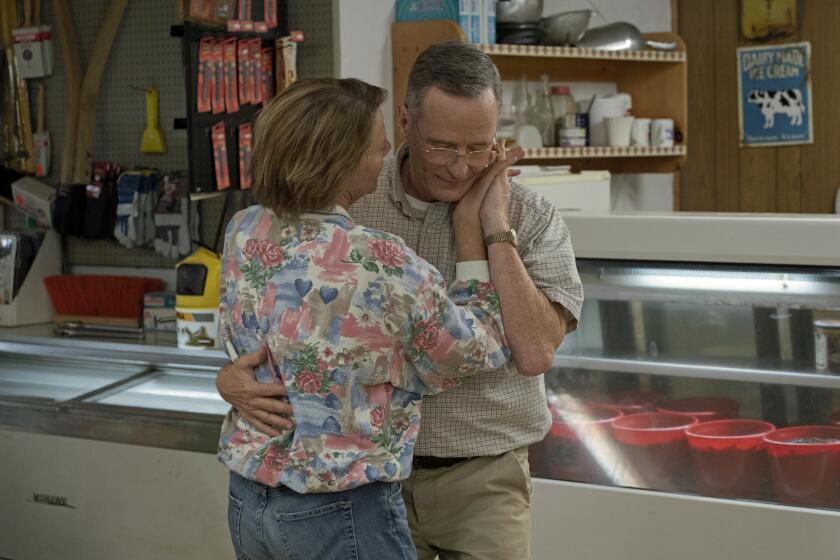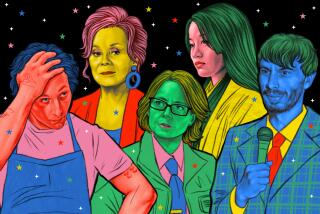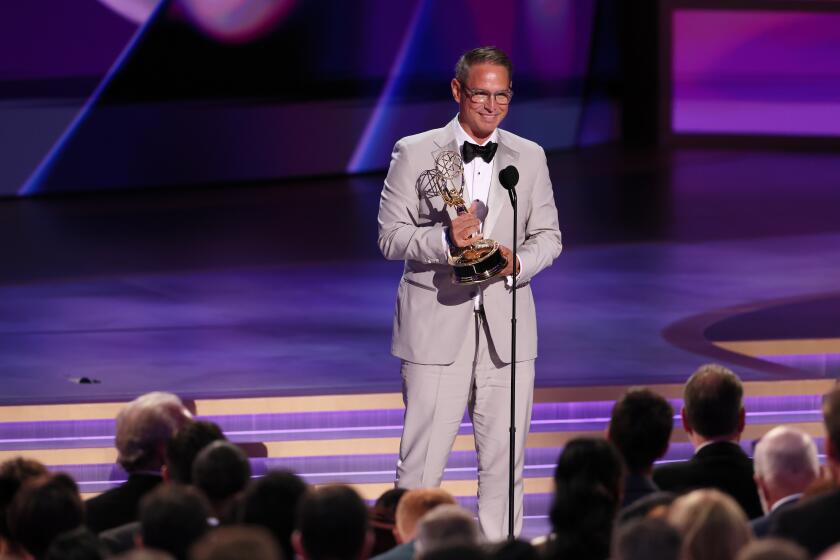A defense of made-for-TV movies: It’s an evolving class in an era of change
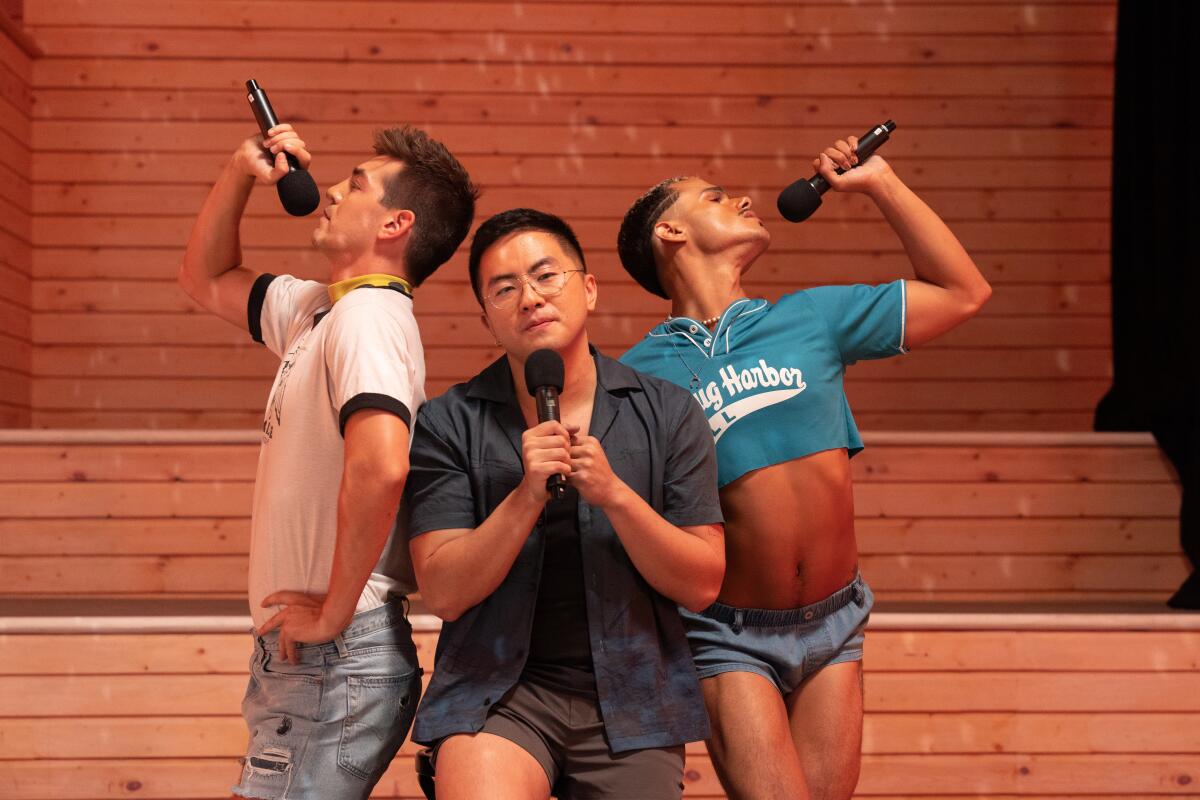
Television’s latest, extended golden age has seen the revitalization of nearly every possible format — miniseries are now “limited series” and often star A-list film actors. Anthologies are back. Top-rated TV series now thrive on just eight or 10 episodes a season. Everything old feels new again.
But what of the old warhorse, the TV movie? Though select premium cable channels like HBO and Showtime have created high-level made-for-TV movies for decades, the explosion of content on streamers (along with changes in the theatrical system during and post-pandemic) is causing filmmakers to rethink what a movie made for television can be. And while some decry the quality of these projects of late, such movies as “Jerry & Marge Go Large” (Paramount+), “Fire Island” (Hulu), “Reality” (HBO/Max), “Somebody I Used to Know” (Prime Video) and even “Dolly Parton’s Mountain Magic Christmas” (NBC) are among the strong contenders for this year’s outstanding television movie category — and each reveals something fresh about the way the classic TV movie has evolved.
“Back in the 1950s, ’60s, ’70s, you had made-for-TV movies with high profiles. [TV executive] Barry Diller would eventize movies for television,” recalls “Fire Island” producer John Hodges. “After that, they became repositories for low-fi disaster films. [Today] even Hallmark films have a very defined audience and place, but not the caliber in front of and behind the camera we’re seeing now with streamers coming into the game.”
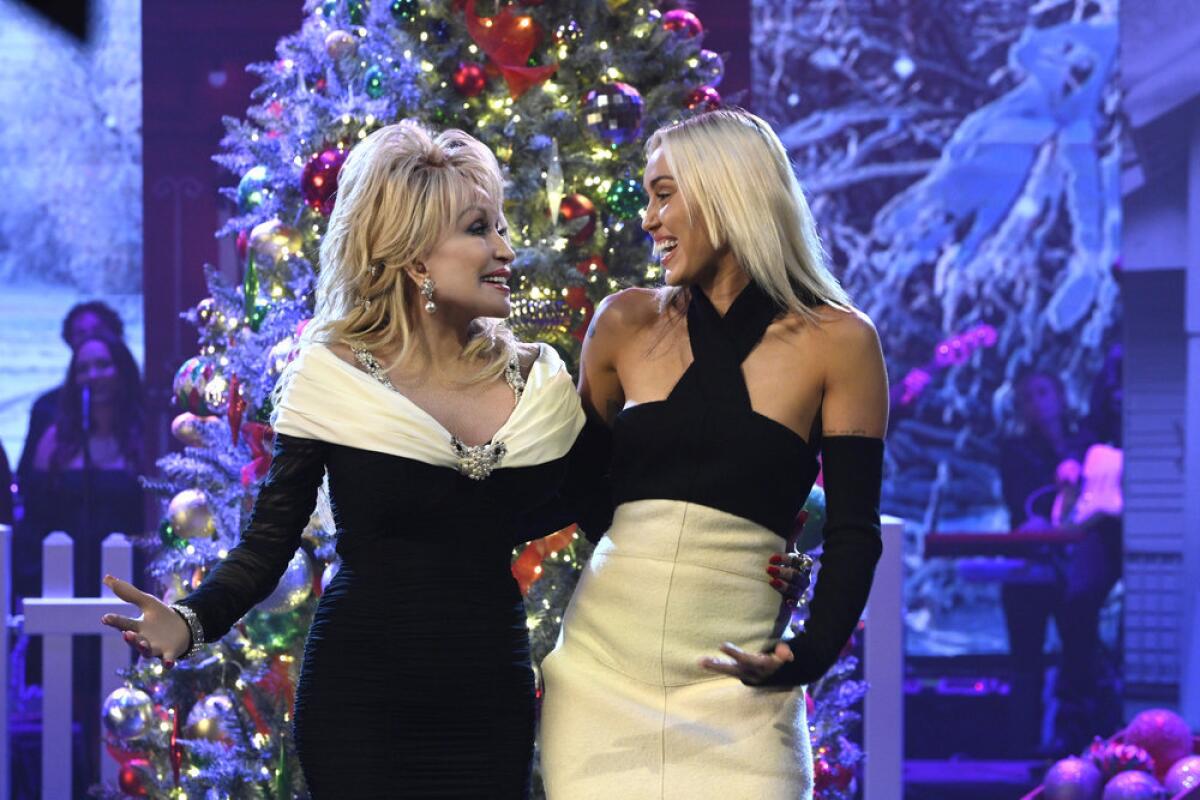
Streaming platform availability does seem to have given filmmakers the impetus to take risks with their content. “People do seem to be taking bigger swings, trying things that feel more outside the box,” says Dave Franco, who directed the rom-com “Somebody” and co-wrote the script with his wife, Alison Brie (who stars in the film). “There are filmmakers who might have stayed away from TV movies in the past but now realize that distributors are allowing them to make projects they wouldn’t have been able to otherwise.”
That openness has crossed over into broadcast TV too. Sam Haskell, who’s made multiple films with Parton (and won the TV movie Emmy for her “Christmas on the Square” in 2021), was able to freshen up a standard holiday film by putting a new spin on the story: “Mountain Magic” takes the music legend into a meta world that’s about the making of a holiday special. Plus, he’s a fan of the movie format.
Cranston and Bening star in the Paramount+ fact-based, low-key caper movie about married retirees who find a lottery loophole.
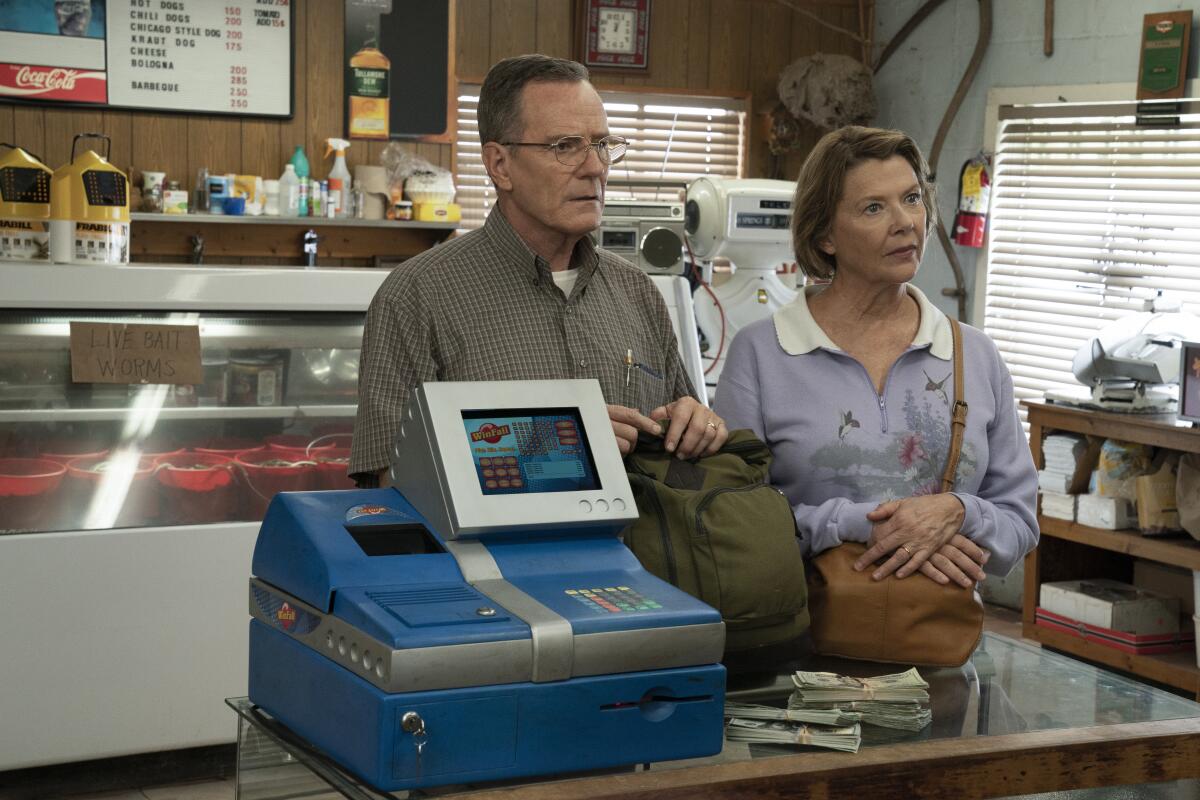
“I think holidays are the best place for a two-hour movie format,” he says. “The audience is fickle, and if they don’t understand something, they’ll turn it off.”
Filmmakers’ interest in the small screen also stems from seismic shifts in the cinema industry; indie films are just as likely to end up on a small-screen streaming channel these days as in multiplexes or art house theaters. Tina Satter’s “Reality” (based on her play “Is This a Room”) says her Sydney Sweeney-starring project was “totally an indie movie” at first. And it did premiere in theaters internationally — but HBO put it on premium cable in the U.S.
Satter was happy with the pivot. “So many more people get to see the movie this way,” she says. “It might not otherwise have come to them. We’re getting the best of both worlds.”
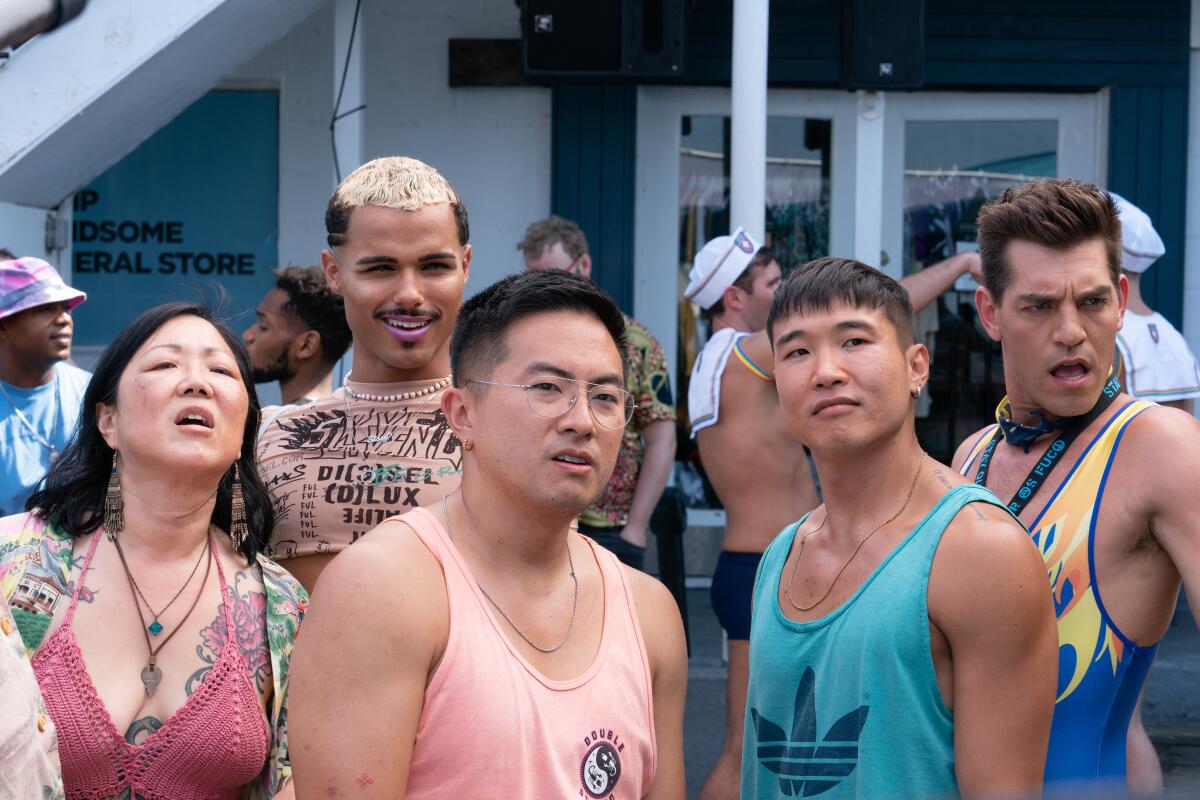
Expanded audiences for a movie are a strong lure, Franco agrees. “It’s wild to have a movie that’s streamed in 240 countries at the click of a button,” he says. “It’s obviously beneficial to be able to make a somewhat-indie film that doesn’t just disappear [from theaters]. There will be more eyeballs on it this way.”
Lines between theatrical and small-screen movies have been blurring for years, with lockdown/the pandemic making them blurrier. “During the pandemic, we were all captive audiences and craved escapism,” “Fire Island’s” Hodges says. “On the back side of the pandemic, people thought, ‘This is the new normal.’ Then you had films like ‘Top Gun[: Maverick],’ and they realized theatrical is still viable. It’s just that now other platforms are getting bites at the apple.”
All of this has come to pass as the next generation of audience members has come to realize they might not need to be in a movie theater to get a cinematic experience.
“I don’t think there are two tiers anymore,” says David Frankel, director of “Jerry & Marge Go Large,” which stars Bryan Cranston and Annette Bening. “My children, who are 21 now — I couldn’t tell you the last time they saw a movie in the theater, and they love movies. They don’t distinguish.”
In other words, TV movies may not be fully cool, but they have had their prestige level elevated. “The [negative] connotation has just been blown to bits by the really excellent work with excellent acting and unexpected stuff onscreen,” Satter says. “There’s as much strong, credible, special work being screened on TV as in theaters right now.”
Writer and star Joel Kim Booster feared he’d have to ‘protect’ his deeply personal film from criticism. Instead, it found legions of adoring fans.
Which means this might be the right time for the TV Academy to reconsider its TV movie-focused categories. Individual films have their own Emmy category, but TV movie acting is still combined with limited and anthology series actors. A TV movie actor hasn’t won in the lead category since 2013 (Michael Douglas for “Behind the Candelabra”) and a TV movie actress since 2012 (Julianne Moore for “Game Change”).
Actors in longer series have an edge over those in TV movies, says Frankel: “The advantage goes to people in series because people look at those shows longer and the characters make a deeper impression. It’s not necessarily a display of greater performances.”
“Movie actors should compete against movie actors,” agrees Haskell. Combining their category with limited series “keeps a lot of the TV movie actors from having a chance to be nominated.”
For now, it may be enough that TV movies have leveled the playing field with those made for cinema. For Frankel, whatever screen his work is shown on is the one he’s happiest with. “There’s a thrill to having your work seen in the theater,” he says. “But there’s also the thrill of having your work seen by millions of people in one night. Both are gratifying … if you can pull it off.”
More to Read
From the Oscars to the Emmys.
Get the Envelope newsletter for exclusive awards season coverage, behind-the-scenes stories from the Envelope podcast and columnist Glenn Whipp’s must-read analysis.
You may occasionally receive promotional content from the Los Angeles Times.
